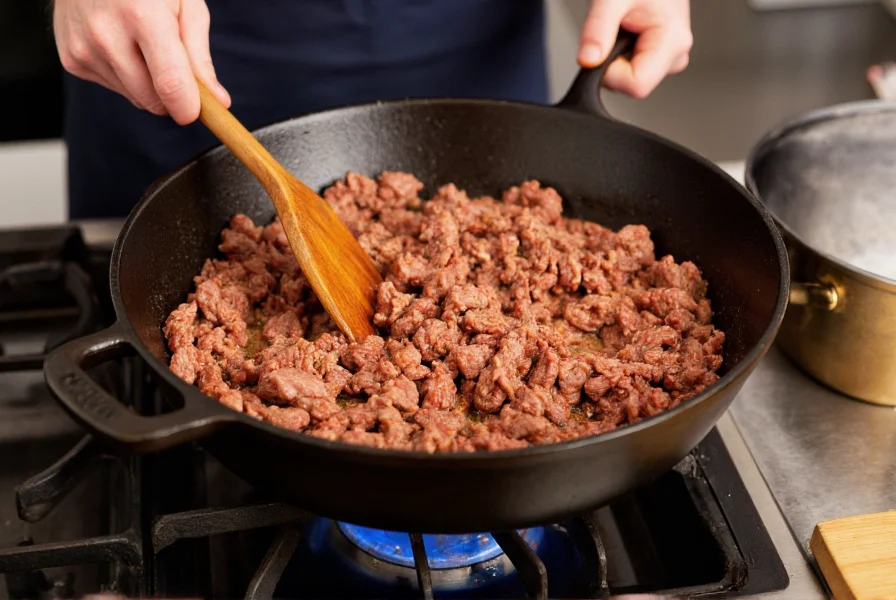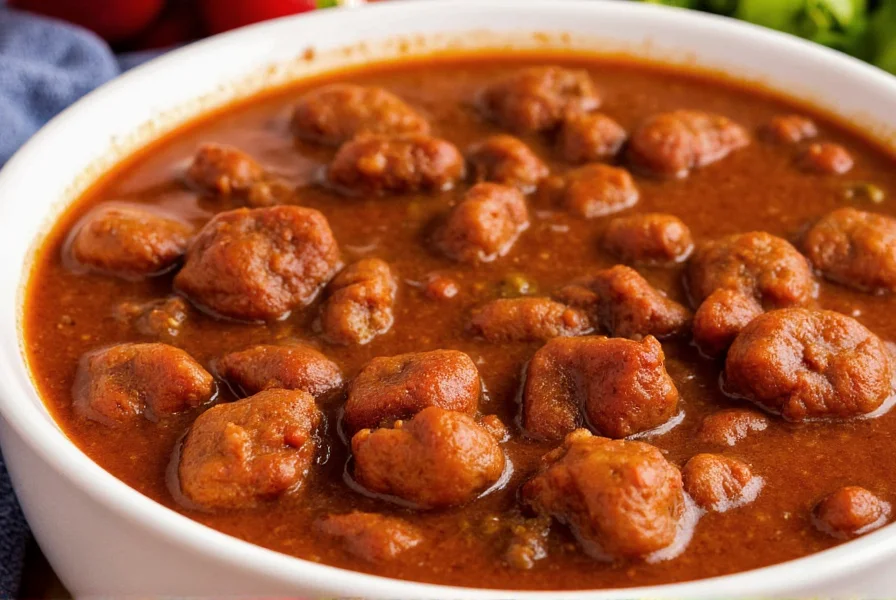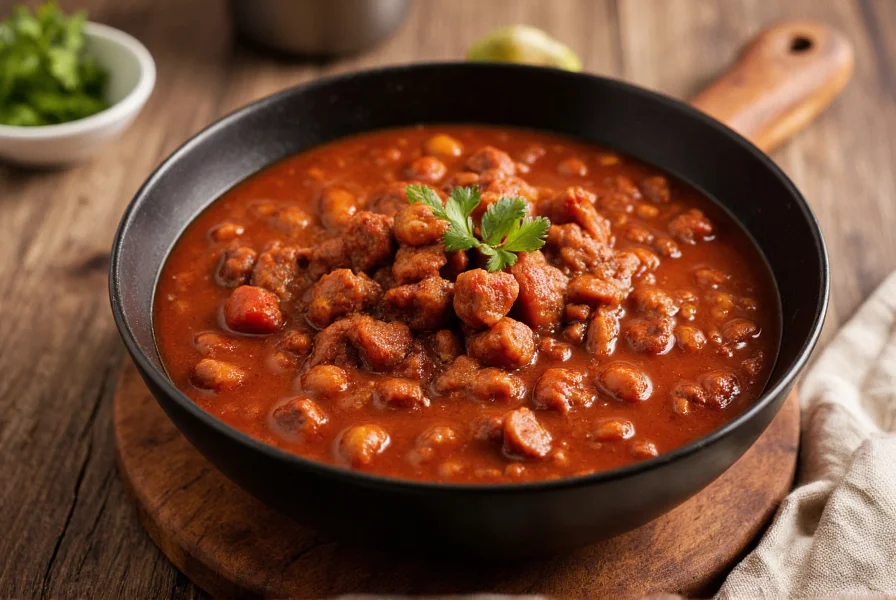Creating exceptional meaty chili requires understanding the delicate balance between generous meat portions and proper moisture management. Unlike standard chili recipes that often rely heavily on beans for bulk, a truly meat-forward version prioritizes quality protein while maintaining the complex spice profile and thick consistency that defines great chili. The key lies in selecting the right cuts, proper browning techniques, and strategic liquid reduction.
What Defines Authentic Meaty Chili
Meaty chili distinguishes itself through three critical elements: meat proportion, texture, and flavor concentration. While traditional chili often maintains a 1:1 meat-to-beans ratio, authentic meaty versions typically feature at least 50% more meat by volume with reduced or eliminated beans. This approach caters to carnivores and those following low-carb diets while delivering intense meat flavor in every spoonful.
The best meat for meaty chili combines ground chuck (80% lean) for richness with leaner cuts like sirloin for texture. Many professional chefs use a triple-meat technique incorporating ground beef, diced stew meat, and crumbled bacon to create layered meat complexity without overwhelming fat content.

Essential Ingredients for Maximum Meat Impact
Building a foundation for exceptional meaty chili requires strategic ingredient selection:
- Meat selection: Use 70-80% lean ground beef for optimal fat content (1.5-2 lbs per batch)
- Bean alternatives: Mushrooms or textured vegetable protein for texture without beans
- Broth concentration: Reduce beef stock by half before adding to intensify meat flavor
- Umami boosters: Tomato paste, Worcestershire sauce, and soy sauce enhance meatiness
For those following meaty chili recipe without beans, consider adding 1 cup of finely chopped mushrooms that have been sautéed until all moisture evaporates. This provides the textural element beans normally contribute while boosting savory depth through natural glutamates.
Step-by-Step Meaty Chili Preparation
Follow this professional technique for perfect meat texture and flavor concentration:
- Brown meat in batches without crowding the pot (critical for proper searing)
- Render diced bacon first, then use the fat to brown ground beef and stew meat
- Remove all meat, then sauté aromatics in the flavorful fond
- Return meat to pot with reduced beef broth (never full-strength)
- Maintain gentle simmer for 90-120 minutes to develop flavor without drying
- Finish with a chili thickening technique: mash some meat against pot wall
Achieving Perfect Meaty Texture
Many home cooks struggle with meaty chili becoming either dry or watery. The solution lies in moisture management:
| Texture Issue | Cause | Solution |
|---|---|---|
| Dry, crumbly meat | Overcooking lean meat | Add 2 tbsp masa harina slurry |
| Watery consistency | Insufficient reduction | Simmer uncovered 15-20 minutes |
| Meat separates from sauce | Excess fat content | Skim fat before final simmer |
For thick meaty chili texture tips, try the "meat paste" technique: remove 1 cup of cooked meat, mash thoroughly with 2 tbsp of the cooking liquid, then stir back into the pot. This creates natural emulsification that binds meat and sauce.

Common Meaty Chili Mistakes to Avoid
Even experienced cooks make these critical errors when attempting how to make chili with more meat:
- Overloading the pot: Causes steaming instead of browning - work in batches
- Adding cold liquid to hot meat: Stops the cooking process and prevents flavor development
- Stirring too frequently: Breaks down meat texture - let it develop fond
- Using pre-made broth: Dilutes meat flavor - reduce homemade stock by 50% first
For competition-style meaty chili, many champions use a two-stage cooking method: brown meat and develop fond, then transfer to a low oven (275°F) for 2-3 hours. This gentle cooking preserves meat integrity while allowing flavors to meld perfectly.
Serving and Storage Recommendations
Meaty chili performs best when allowed to rest overnight, but proper storage is crucial with higher meat content:
- Cool to room temperature within 2 hours (food safety with meat-heavy dishes)
- Store in airtight containers with minimal headspace to prevent oxidation
- Reheat gently with splash of beef broth to restore moisture
- Freeze in portion-sized containers for up to 3 months
When serving ground beef chili recipe with extra meat, consider topping options that complement rather than overwhelm the meat focus: a small dollop of sour cream, finely diced white onion, and fresh cilantro leaves. Avoid heavy cheese toppings that can mask the carefully developed meat flavors.
Frequently Asked Questions
Can I make meaty chili without beans while maintaining good texture?
Yes, use finely diced mushrooms sautéed until all moisture evaporates, or incorporate 1/4 cup masa harina to thicken naturally. The professional technique is to remove one cup of cooked meat, mash thoroughly with cooking liquid, then stir back into the pot to create natural emulsification that binds the sauce.
What's the ideal meat-to-liquid ratio for meaty chili?
For authentic meaty chili, use 1.5-2 pounds of meat per 16 ounces of liquid. The liquid should be reduced beef stock (simmered down by half) rather than full-strength broth. This creates a 3:1 meat-to-liquid ratio by volume after cooking, delivering intense meat flavor without dryness.
How do I prevent meaty chili from becoming dry during cooking?
Maintain gentle simmer (small bubbles barely breaking surface), never rapid boil. Use 80% lean ground beef for optimal fat content, and incorporate one piece of diced stew meat per cup of chili for connective tissue that breaks down into natural gelatin. If drying occurs, add liquid in 2-tablespoon increments of reduced beef stock.
What cut of beef works best for meaty chili?
Combine 70-80% lean ground chuck (for richness) with 15-20% diced chuck roast (for texture) and crumbled bacon (for smoky depth). Avoid leaner cuts like sirloin as primary meat, as they lack sufficient fat for proper flavor development in long-cooked chili. The triple-meat approach creates layered complexity without excessive greasiness.











 浙公网安备
33010002000092号
浙公网安备
33010002000092号 浙B2-20120091-4
浙B2-20120091-4